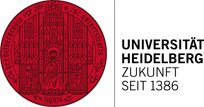Semitic Studies

Course outline
Course structure
Main research interests
Formal requirements
Academic advisor
Contact
| Degree: | Bachelor of Arts |
| Application: | not required |
| Course commences: | winter semester |
| Standard course duration: | 6 semesters |
| Focus options: | 50%; 25% |
| Language requirements: | none |
| Language of instruction: | German and other languages |
Course outline
Semitic Studies focuses on Semitic languages and cultures from the first written records (ca. 2600 BC) to the present. The language area extends across three continents, ranging from the Atlantic in the west to Uzbekistan and Afghanistan, and from the Mediterranean to Ethiopia. Among the approx. 70 Semitic languages and their countless dialects are languages representative of major cultures, among them Phoenician (the source of our alphabet) and the Hebrew, Aramaic and Arabic languages closely associated with the monotheistic religions Judaism, Christianity and Islam. Because of the special features of its script and culture, Akkadian is studied in conjunction with the non-Semitic cuneiform languages (notably Sumerian) by scholars in Assyriology, which was originally part of Semitic Studies but has now established itself as a discipline in its own right.
Despite the efforts undertaken over the last few decades (in which numerous languages were identified for the first time), the status of research on the various Semitic languages still varies considerably. All in all, it is fair to say that the Semitic languages that are no longer extant have been investigated more thoroughly than those that are still spoken. In the recent past, gratifying progress has been made in our knowledge of modern Aramaic and of Arabic dialects, but major areas still await investigation. Least well-known are the New South Arabic languages and the minor Semitic languages of Ethiopia. For a true understanding of the development the Semitic languages have gone through, the languages spoken in the peripheral areas are of crucial importance. In the years to come, ongoing investigation of these languages can safely be expected to advance our understanding of the older Semitic tongues. On the other hand, sound knowledge of the older language forms is essential for research into modern Semitic languages and dialects. To produce the very best research results, it is no longer possible for Semitic Studies to concentrate exclusively on the older Semitic languages or on one modern Semitic tongue.
The status of Semitic Studies in relation to other subjects taught at Heidelberg University
Semitic Studies is central to the endeavours of the Department of Languages and Cultures of the Near East because it links the two other subjects taught at the Department: Assyriology (mid-third to mid-first millennium BC) and Islamic Studies, which focuses on the history of Islam from its beginnings around 600 AD to the present. For both these subjects, a Semitic language is of central significance, Akkadian for Assyriology and Arabic for Islamic Studies. Accordingly, for students of these two subjects Semitic Studies is an ideal subsidiary (minor) subject as it imparts sound linguistic knowledge and also draws attention to the frequently similar cultures of the neighbouring Semitic peoples. Vice versa, Assyriology and Islamic Studies are highly recommendable subsidiary subjects for students focusing on Semitic Studies.
Naturally, there are also close links with the other subjects concentrating centrally or partly on the Near East: Jewish Studies, Egyptology, Near Eastern Archaeology, Theology, Geography and Anthropology. Flashpoints in the Near East and the fact that many Near Eastern countries have become popular tourist destinations are factors ensuring consistent interest in the languages of the area.
Requirements and prerequisites
There are no language requirements stipulated in the Examination Regulations, but it is certainly true to say that the most important prerequisites for success in Semitic Studies are a gift for, and interest in, foreign languages and an interest in the cultures and civilisations of the Near East. A good working knowledge of English and French is necessary for the engagement with the international scholarly literature on the subject, and the ability to read and understand other foreign languages (Italian, Spanish, Russian etc.) is definitely an asset.
Course structure
Bachelor and Master:
The M.A. course follows on from the B.A. programme. Semitic Studies can be taken either as a joint-main subject (a so-called 50% subject, i.e. in combination with another subject also accounting for 50% of the student workload) or as a subsidiary (minor) subject (a so-called 25% subject, i.e. in combination with a main subject accounting for 75% of the student workload).
The B.A. course normally takes six semesters and closes (for joint-main-course students) with the B.A. thesis. The B.A. course in Semitic Studies focuses on the acquisition of languages on scholarly principles. Students in the B.A. programme (both joint-main and subsidiary) will need to participate successfully in one language course, students on the joint-main course will also need to take a second language course. The language courses take 4 semesters. The relevant languages taught at Heidelberg University are Arabic, Aramaic, Hebrew and Akkadian.
Alongside the language courses, students attend lectures, introductory classes and preparatory seminars on specific topics to acquire foundational knowledge of the subject and familiarise themselves with the methods used in scholarly work. Occasionally, classes on other Semitic languages are also offered.
The subsequent M.A. course takes 4 semesters (7th to 10th semester) and closes with the (oral) M.A. examination and an M.A. thesis (for students with Semitic Studies as a joint-main subject). Attendance of advanced classes (seminars) enables students to deepen and extend the linguistic and factual knowledge acquired in the B.A. course. Language proficiency is also an ongoing concern, Arabic and Aramaic being of central significance. In the course of the programme, students are expected to attend seminars and courses on these two languages (one only for subsidiary students). Alongside language acquisition, evidence must be produced of successful participation in seminars on selected topics in Semitic Studies, Arabic and/or Aramaic dialectology, and research in Semitic Studies. These classes take up the first three semesters. The fourth semester is normally reserved for examinations (oral exam and M.A. thesis).
Main research interests
Arabic is the most important language spoken in the present-day Near East. Knowledge of Arabic is invaluable for anyone visiting the Near East to learn other languages, consult the libraries of the Arab world or take part in excavations. Accordingly, all students on the Semitic Studies course are required to learn Arabic. They are also recommended to learn a modern Arabic dialect.
The Heidelberg Department has a research focus on Aramaic. Study of this culture can look back on a long tradition at the University, dating back to the year 1527, when Sebastian Münster published the first Aramaic-Latin dictionary. After the translation of the Bible into Syrian in the 2nd century AD, this Aramaic dialect attained major significance and the amount of literature written in Syrian is considerable. Accordingly, there are regular offerings on the language, which at the same time serves as a basis for learning other (older and more modern) Aramaic dialects, many of which are taught at Heidelberg. Aramaic has been spoken for over 3,000 years, which makes it one of the oldest living languages in the world. As such, it is more or less unrivalled in the opportunities it offers for detailed study of language change over a vast period of time.
The third central concern is the study of New South Arabian languages. At the moment, the presence of a lecturer from Yemen enables the Department to teach and investigate Mehri.
Apart from Akkadian and Hebrew, which are taught at the Department of Assyriology and the College of Jewish Studies respectively, classes on the many other Semitic languages, such as Ethiopian, can only be offered at fairly lengthy intervals.
Formal requirements
Admission
Admission to the B.A. course is not subject to any restrictions. Click here for information on how to enrol.
International applicants:
There are special regulations for international applicants. For more information, apply to the International Relations Office of Heidelberg University (Seminarstraße 2).
Subject combinations
Subject combinations are listed in the Catalogue of Subjects.
Study and examination regulations
B.A. Semitic Studies (28 March 2007, last amended 28 September 2016)
Module Handbook
Please click here to find the latest Module Handbook.
Examinations board
Issues arising in connection with examinations, credit transfer and academic credential recognition are dealt with by the relevant examinations board/office. For more information, consult the academic advisor(s) indicated below.
Fees
Tuition fees at Heidelberg University are payable at the beginning of each semester.
M.A. course
Heidelberg University offers a consecutive M.A. course in Semitic Studies.
Academic advisor
Bachelor / Master:
Andreas Fink
Schulgasse 2
office hours by arrangement
phone: +49 (0)6221 542960
e-mail: andreas.fink@ori.uni-heidelberg.de
Contact
Department of Languages and Cultures of the Near East
Semitic Studies Dept.
Schulgasse 2
D-69117 Heidelberg
Secretaries' office:
phone: +49 (0)6221 542961
fax: +49 (0)6221 543401
e-mail: semitistik@uni-hd.de
Internet: http://semitistik.uni-hd.de
Location
Student representation:
e-mail: fachschaft.semitistik@ori.uni-heidelberg.de

